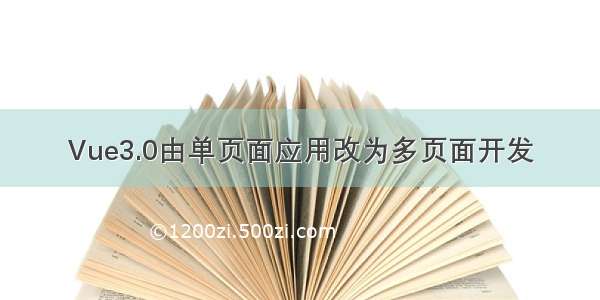
使用Flask和Vue制作一个基本的CRUD单页面应用,其中后台用到了RESTful API
参考原版的教程https://testdriven.io/blog/developing-a-single-page-app-with-flask-and-vuejs/ 步骤清晰,动作规范.
下面开始我的实际操练步骤记录
最终效果
环境准备
系统 : Windows10 1903
IDE : VSCode
Python : 3.7.5
Node.js : 10.16.3
# 安装pyton-venvpip install virtualenv
创建venv环境&安装Flask
C:\Users\lpwm\Desktop>cd flask-vue-crudC:\Users\lpwm\Desktop\flask-vue-crud>mkdir serverC:\Users\lpwm\Desktop\flask-vue-crud>cd serverC:\Users\lpwm\Desktop\flask-vue-crud\server>python -m venv envC:\Users\lpwm\Desktop\flask-vue-crud\server>env\Scripts\activate.bat(env) C:\Users\lpwm\Desktop\flask-vue-crud\server>pip install flask flask-cors
测试Flask功能
打开Visual Studio Code并连接到WSL,在server文件夹中创建app.py文件
"""测试Flask"""from flask import Flask, jsonifyfrom flask_cors import CORS# 配置参数,开启debug模式,json转换中文不使用unicodeDEBUG = TrueJSON_AS_ASCII = False# 实例化Flaskapp = Flask(__name__)app.config.from_object(__name__)# 开启CORS,解决跨域调用问题CORS(app, resources={r'/*': {'origins': '*'}})# 也可以简单直接写CORS(app)# 配置路由@app.route('/ping', methods=['GET'])def ping_pong():return jsonify('pong!中文!')if __name__ == "__main__":app.run()
运行app.py后打开浏览器访问http://127.0.0.1:5000/ping可以看到返回"pong!中文!",Flask工作正常.
安装Vue
# 退出venv环境(env) C:\Users\lpwm\Desktop\flask-vue-crud\server>env\Scripts\deactivate.bat# 配置使用淘宝的npm镜像站npm config set registry https://registry.# 安装vue/clinpm install -g @vue/cli
下面开始使用vue的cli命令行创建项目,在flask-vue-crud位置执行:
C:\Users\lpwm\Desktop\flask-vue-crud>vue create clientVue CLI v4.0.4? Please pick a preset:default (babel, eslint)❯ Manually select features? Check the features needed for your project: (Press <space> to select, <a> to toggle all, <i> to invert selection)◉ Babel◯ TypeScript◯ Progressive Web App (PWA) Support❯◉ Router◯ Vuex◯ CSS Pre-processors◯ Linter / Formatter# 被Linter折腾了一天,最终决定放弃了,代码样式自己写的爽就行了◯ Unit Testing◯ E2E Testing? Use history mode for router? (Requires proper server setup for index fallback in production) Yes? Where do you prefer placing config for Babel, PostCSS, ESLint, etc.?In dedicated config files❯ In package.json? Save this as a preset for future projects? (y/N) No# 安装速度还可以,差不多2分钟吧? Successfully created project client.? Get started with the following commands:$ cd client$ npm run serve# 参照上面命令跑一下试试
棒棒哒~下面开始解释vue命令创建的client/src文件夹中主要文件的作用
其中重点说一下client/src/components/HelloWorld.vue这个文件,这是一个单模块文件,包含下面三部分内容:
<template></template>:静态HTML模板<script></script>:使用js脚本与模块进行交互<style></style>:CSS样式表
HBuilderX配置
插件安装
eslint-plugin-vuejs-beautifyNPM修改format插件的jsbeatufyrc.js文件options将换行符改为LF以兼容Linux
"eol": "\n", //行结束符 Win:\r\n Linux:\n
测试Vue
开始改造上面flask输出的ping路径.
删除views文件夹,同时删除components下的HelloWorld.vue,并在components文件夹中创建一个新的Ping.vue文件:
<template><div><p>{{ msg }}</p></div></template><script>export default {name: 'Ping',data() {return {msg: 'Hello!',};},};</script>
修改client/src/router/index.js映射URL的/ping路径到Ping.vue模块:
import Vue from 'vue';import VueRouter from 'vue-router';import Ping from '../component/Ping.vue';Vue.use(VueRouter);const routes = [{path: '/ping',name: 'Ping',component: Ping,},];const router = new VueRouter({mode: 'history',base: process.env.BASE_URL,routes,});export default router;
修改App.vue
<template><div id="app"><router-view/></div></template>
再打开浏览器访问http://127.0.0.1:8080/ping
接下来使用axios库来连接Vue前端和Flask后端使用AJAX请求进行通信,axios详细API文档参考这里Axios中文说明
PS C:\Users\lpwm\Desktop\flask-vue-crud\client> npm install axios
更新一下Ping.vue文件中的<scipt>标签内容:
<script>import axios from 'axios';export default {name: 'Ping',data() {return {msg: ''};},methods: {getMessage() {const path = 'http://localhost:5000/ping';axios.get(path).then(res => {this.msg = res.data;}).catch(error => {console.error(error);});}},created() {this.getMessage();}};</script>
这里使用了ES6语法中的箭头函数(Arrow Function),援引一下MDN中的相关解释MDN完整原文
var elements = ['Hydrogen','Helium','Lithium','Beryllium'];elements.map(function(element) {return element.length; }); // 返回数组:[8, 6, 7, 9]// 上面的普通函数可以改写成如下的箭头函数elements.map((element) => {return element.length;}); // [8, 6, 7, 9]// 当箭头函数只有一个参数时,可以省略参数的圆括号elements.map(element => {return element.length;}); // [8, 6, 7, 9]// 当箭头函数的函数体只有一个 `return` 语句时,可以省略 `return` 关键字和方法体的花括号elements.map(element => element.length); // [8, 6, 7, 9]// 在这个例子中,因为我们只需要 `length` 属性,所以可以使用参数解构// 需要注意的是字符串 `"length"` 是我们想要获得的属性的名称,而 `lengthFooBArX` 则只是个变量名,// 可以替换成任意合法的变量名elements.map(({"length": lengthFooBArX }) => lengthFooBArX); // [8, 6, 7, 9]
现在分别在两个VSCode中运行起来Flask应用和使用npm run serve跑起来vue应用
打开浏览器访问http://localhost:8080/ping可以看到收到后台Flask返回的pong数据
安装Bootstrap
npm install @bootstrap --save
安装结束后警告缺少jquery依赖,这个不用管它,使用Vue就不用jQuery了,避免产生语法冲突.
在client/src/main.js中引入Bootstrap
import 'bootstrap/dist/css/bootstrap.css';import Vue from 'vue';import App from './App.vue';import router from './router';Vue.config.productionTip = false;new Vue({router,render: h => h(App),}).$mount('#app');
更新client/src/App.vue为app所在的DIV添加个margin-top的样式
<template><div id="app"><router-view /></div></template><style>#app {margin-top: 60px;}</style>
更新client/src/components/Ping.vue添加个Bootstrap按钮控件试试效果
<template><div class='container'><p>{{ msg }}</p><div class='btn btn-primary'>{{msg}}</div></div></template><script>import axios from 'axios';export default {name: 'Ping',data() {return {msg: ''};},methods: {getMessage() {const path = 'http://localhost:5000/ping';axios.get(path).then(res => {this.msg = res.data;}).catch(error => {console.error(error);});}},created() {this.getMessage();}};</script>
重新跑一下vue应用
npm run serve
接下来,在components中添加一个新的模块Books.vue
<template><div class="container"><p>books</p></div></template>
更新一下路由router/index.js将首页/路由指向Books模块
import Vue from "vue";import VueRouter from "vue-router";import Books from "../components/Books.vue";import Ping from "../components/Ping.vue";Vue.use(VueRouter);const routes = [{path: "/",name: "books",component: Books},{path: "/ping",name: "Ping",component: Ping}];const router = new VueRouter({mode: "history",base: process.env.BASE_URL,routes});export default router;
分别测试一下访问http://localhost:8080和http://localhost:8080/ping可以看到路由工作正常
最后,修改一下Books模块中的<template></template>模板部分代码,写一个快速的Bootstrap风格表格
<template><div class="container"><div class="row"><div class="col-sm-10"><h1>Books</h1><hr><br><br><button type="button" class="btn btn-success btn-sm">Add Book</button><br><br><table class="table table-hover"><thead><tr><th scope="col">Title</th><th scope="col">Author</th><th scope="col">Read?</th><th></th></tr></thead><tbody><tr><td>foo</td><td>bar</td><td>foobar</td><td><div class="btn-group" role="group"><button type="button" class="btn btn-warning btn-sm">Update</button><button type="button" class="btn btn-danger btn-sm ml-2">Delete</button></div></td></tr></tbody></table></div></div></div></template>
预览效果:
接下来就是要开始搞CRUD部分的功能实现了
要实现的目标:
使用Python和Flask怼一个RESTfu API规范的后端服务,使用HTTP中的GET,POST,PUT,DELETE方法进行通信.
使用VUE.js怼单页面风格的前端界面和后端的API进行交互
GET路由
Server端(Flask)
给server/app.py中添加一个存放图书的数组变量模拟数据
BOOKS = [{'title': 'On the Road','author': 'Jack Kerouac','read': True},{'title': 'Harry Potter and the Philosopher\'s Stone','author': 'J. K. Rowling','read': False},{'title': 'Green Eggs and Ham','author': 'Dr. Seuss','read': True}]
修改Flask主文件app.py的路由
@app.route('/books', methods=['GET'])def all_books():return jsonify({'status': 'success','books': BOOKS})
现在测试一下访问http://localhost:5000/books可以拿到flask返回的json数据
Client端(VUE)
更新一下components/Books.vue模块
<template><div class="container"><div class="row"><div class="col-sm-10"><h1>Books</h1><hr /><br /><br /><button type="button" class="btn btn-success btn-sm">Add Book</button><br /><br /><table class="table table-hover"><thead><tr><th scope="col">Title</th><th scope="col">Author</th><th scope="col">Read?</th><th></th></tr></thead><tbody><tr v-for="(book, index) in books" :key="index"><td>{{ book.title }}</td><td>{{ book.author }}</td><td><span v-if="book.read">Yes</span><span v-else>No</span></td><td><div class="btn-group" role="group"><button type="button" class="btn btn-warning btn-sm">Update</button><button type="button" class="btn btn-danger btn-sm ml-2">Delete</button></div></td></tr></tbody></table></div></div></div></template><script>import axios from "axios";export default {data() {return {books: []};},methods: {getBooks() {const path = "http://localhost:5000/books";axios.get(path).then(res => {this.books = res.data.books;}).catch(error => {// eslint-disable-next-lineconsole.error(error);});}},created() {this.getBooks();}};</script>
当Books.vue模块created()完成的时候,调用getBooks()函数从后台获取图书数据
模板部分使用了v-for标签,在table中循环输出行,将循环过程中的index作为了key主键(该主键设置是VUE规范推荐的,据说可以提高渲染效率). 使用v-if标签来判断渲染read是否的值.
Bootstrap Vue
接下来使用Bootstrap中的模态框控件来实现添加新书的界面,需要使用npm安装bootstrap-vue包,注意这个包和之前已经装好的bootstrap包是不一样的,由于原生的bootstrap中模态框是基于jQuery实现的,而VUE和jQuery同时使用会产生语法上的冲突,所以这里要引入这个专门为vue改良的bootstrap包,后面的html语法也会有些不同,现在先按下不表.
安装一下:
npm install @bootstrap-vue --save
修改client/src/main.js启用bootstrap-vue
import 'bootstrap/dist/css/bootstrap.css';import BootstrapVue from 'bootstrap-vue';import Vue from 'vue';import App from './App.vue';import router from './router';Vue.use(BootstrapVue);Vue.config.productionTip = false;new Vue({router,render: h => h(App),}).$mount('#app');
POST路由
Server端
更新app.py处理添加新书时POST请求的路由,修改之前添加过的/books路由,methods增加POST类型,然后通过判断request.method来确定接下来要进行的操作
@app.route('/books', methods=['GET', 'POST'])def all_books():response_object = {'status': 'success'}if request.method == 'POST':post_data = request.get_json()BOOKS.append({'title': post_data.get('title'),'author': post_data.get('author'),'read': post_data.get('read')})response_object['message'] = 'Book added!'else:response_object['books'] = BOOKSreturn jsonify(response_object)
别忘了更新一下import部分的引入:
from flask import Flask, jsonify, request
可以使用WSL中的curl命令测试发送POST数据
$ curl -X POST http://localhost:5000/books -d \'{"title": "1Q84", "author": "Haruki Murakami", "read": "true"}' \-H 'Content-Type: application/json'
使用浏览器访问http://localhost:5000/books默认的GET请求可以正常获取到图书的json数据
Client端
在主<div>里面添加一个模态框来实现增加新图书的界面
<b-modal ref="addBookModal"id="book-modal"title="Add a new book"hide-footer><b-form @submit="onSubmit" @reset="onReset" class="w-100"><b-form-group id="form-title-group"label="Title:"label-for="form-title-input"><b-form-input id="form-title-input"type="text"v-model="addBookForm.title"requiredplaceholder="Enter title"></b-form-input></b-form-group><b-form-group id="form-author-group"label="Author:"label-for="form-author-input"><b-form-input id="form-author-input"type="text"v-model="addBookForm.author"requiredplaceholder="Enter author"></b-form-input></b-form-group><b-form-group id="form-read-group"><b-form-checkbox-group v-model="addBookForm.read" id="form-checks"><b-form-checkbox value="true">Read?</b-form-checkbox></b-form-checkbox-group></b-form-group><b-button type="submit" variant="primary">Submit</b-button><b-button type="reset" variant="danger">Reset</b-button></b-form></b-modal>
这里使用了v-model标签来绑定input输入框中的值和VUE中data数据对象中的addBookForm变量(这个变量在下面代码中声明)
更新下script部分的代码:
<script>import axios from 'axios';export default {data() {return {books: [],addBookForm: {title: '',author: '',read: [],},};},methods: {getBooks() {const path = 'http://localhost:5000/books';axios.get(path).then((res) => {this.books = res.data.books;}).catch((error) => {// eslint-disable-next-lineconsole.error(error);});},addBook(payload) {const path = 'http://localhost:5000/books';axios.post(path, payload).then(() => {this.getBooks();}).catch((error) => {// eslint-disable-next-lineconsole.log(error);this.getBooks();});},initForm() {this.addBookForm.title = '';this.addBookForm.author = '';this.addBookForm.read = [];},onSubmit(evt) {evt.preventDefault();this.$refs.addBookModal.hide();let read = false;if (this.addBookForm.read[0]) read = true;const payload = {title: this.addBookForm.title,author: this.addBookForm.author,read, // property shorthand};this.addBook(payload);this.initForm();},onReset(evt) {evt.preventDefault();this.$refs.addBookModal.hide();this.initForm();},},created() {this.getBooks();},};</script>
代码解释一下:
data中新创建了一个addBookForm对象,用来和表单中的input控件使用v-model标签进行数据双向绑定(这正是VUE的魅力所在)onSubmit()函数和<b-form>中的submit属性进行了绑定,用户在提交表单的时候会调用.其中evt.preventDefault()是用来屏蔽浏览器默认的提交表单操作,this.$refs.addBookModal.hide()用来关闭模态框,随后调用addBook()提交数据给后台添加新图书,最后通过initForm()重置表单数据addBook()函数发送POST请求给后台的/books路径用来添加新图书
最后更新一下模板中"Add Book"按钮以触发模态框显示
<button type="button" class="btn btn-success btn-sm" v-b-modal.book-modal>Add Book</button>
现在Books.vue模块的完整代码应该是这样:
<template><div class="container"><div class="row"><div class="col-sm-10"><h1>Books</h1><hr /><br /><br /><button type="button" class="btn btn-success btn-sm" v-b-modal.book-modal>Add Book</button><br /><br /><table class="table table-hover"><thead><tr><th scope="col">Title</th><th scope="col">Author</th><th scope="col">Read?</th><th></th></tr></thead><tbody><tr v-for="(book, index) in books" :key="index"><td>{{ book.title }}</td><td>{{ book.author }}</td><td><span v-if="book.read">Yes</span><span v-else>No</span></td><td><div class="btn-group" role="group"><button type="button" class="btn btn-warning btn-sm">Update</button><button type="button" class="btn btn-danger btn-sm ml-2">Delete</button></div></td></tr></tbody></table></div></div><b-modal ref="addBookModal" id="book-modal" title="Add a new book" hide-footer><b-form @submit="onSubmit" @reset="onReset" class="w-100"><b-form-group id="form-title-group" label="Title:" label-for="form-title-input"><b-form-inputid="form-title-input"type="text"v-model="addBookForm.title"requiredplaceholder="Enter title"></b-form-input></b-form-group><b-form-group id="form-author-group" label="Author:" label-for="form-author-input"><b-form-inputid="form-author-input"type="text"v-model="addBookForm.author"requiredplaceholder="Enter author"></b-form-input></b-form-group><b-form-group id="form-read-group"><b-form-checkbox-group v-model="addBookForm.read" id="form-checks"><b-form-checkbox value="true">Read?</b-form-checkbox></b-form-checkbox-group></b-form-group><b-button-group><b-button type="submit" variant="primary">Submit</b-button><b-button type="reset" variant="danger">Reset</b-button></b-button-group></b-form></b-modal></div></template><script>import axios from "axios";export default {data() {return {books: [],addBookForm: {title: "",author: "",read: []}};},methods: {getBooks() {const path = "http://localhost:5000/books";axios.get(path).then(res => {this.books = res.data.books;}).catch(error => {// eslint-disable-next-lineconsole.error(error);});},addBook(payload) {const path = "http://localhost:5000/books";axios.post(path, payload).then(() => {this.getBooks();}).catch(error => {// eslint-disable-next-lineconsole.log(error);this.getBooks();});},initForm() {this.addBookForm.title = "";this.addBookForm.author = "";this.addBookForm.read = [];},onSubmit(evt) {evt.preventDefault();this.$refs.addBookModal.hide();let read = false;if (this.addBookForm.read[0]) read = true;const payload = {title: this.addBookForm.title,author: this.addBookForm.author,read // property shorthand};this.addBook(payload);this.initForm();},onReset(evt) {evt.preventDefault();this.$refs.addBookModal.hide();this.initForm();}},created() {this.getBooks();}};</script>
Alert提醒模块
接下来添加一个用来反馈提醒用户操作结果的模块client/src/components/Alert.vue
<template><p>It works!</p></template>
在client/src/components/Books.vue模块中修改script部分代码注册上面添加的Alert.vue模块
<script>import axios from 'axios';import Alert from './Alert.vue';//中间省略...export default {data() {return {books: [],addBookForm: {title: '',author: '',read: [],},};},components: {alert: Alert,},//中间省略...};</script>
现在可以在Books.vue模块的template区域中引用Alert.vue模块了
<template><b-container><b-row><b-col col sm="10"><h1>Books</h1><hr><br><br><alert></alert><button type="button" class="btn btn-success btn-sm" v-b-modal.book-modal>Add Book</button>...</b-col></b-row></b-container></template>
刷新一下浏览器,可以看到Alert模块引用并显示成功
下面我们对Alert模块使用b-alert标签进行Bootstrap样式改造
<template><div><b-alert variant="success" show>{{ message }}</b-alert><br></div></template><script>export default {props: ['message'],};</script>
b-alert标签中使用了variant来定义颜色样式,show定义了显示时候使用渐变动画
这里注意一下在script中使用了props来定义声明模块中所包含的属性变量,这样我们自定义的这个模块就可以在被调用的时候,message会作为<alert></alert>标签中的一个属性来接收参数.
回到Books模块中,可以带参数形式的调用Alert模块了,例如这样:
<alert message="hi"></alert>
为了让alert模块中的message变量实现动态化,使用:变量名=语法进行数据双向绑定
<alert :message="message"></alert>
在VUE的data变量中声明message变量:
data() {return {books: [],addBookForm: {title: '',author: '',read: [],},message: '',};},
接着改造一下addBook()函数,加入对message变量的操作
addBook(payload) {const path = 'http://localhost:5000/books';axios.post(path, payload).then(() => {this.getBooks();this.message = 'Book added!';}).catch((error) => {// eslint-disable-next-lineconsole.log(error);this.getBooks();});},
最后,还是使用v-if标签,实现只有showMessage变量为真的时候才显示Alert模块
<alert :message=message v-if="showMessage"></alert>
当然同上面的操作一样,需要在data中声明这个showMessage变量,并且修改addBook()函数,加入对showMessage的操作
data() {return {books: [],addBookForm: {title: '',author: '',read: [],},message: '',showMessage: false,};},
addBook(payload) {const path = 'http://localhost:5000/books';axios.post(path, payload).then(() => {this.getBooks();this.message = 'Book added!';this.showMessage = true;}).catch((error) => {// eslint-disable-next-lineconsole.log(error);this.getBooks();});},
PUT路由
Server端
更新已有的数据需要添加唯一的id标识,可以使用Python标准库中的uuid来生成
修改server/app.py中BOOKS数组变量,别忘了引入uuid库
import uuidBOOKS = [{'id': uuid.uuid4().hex,'title': 'On the Road','author': 'Jack Kerouac','read': True},{'id': uuid.uuid4().hex,'title': 'Harry Potter and the Philosopher\'s Stone','author': 'J. K. Rowling','read': False},{'id': uuid.uuid4().hex,'title': 'Green Eggs and Ham','author': 'Dr. Seuss','read': True}]
修改/books路由中的all_books()函数,为新增加的书添加随机的唯一id
@app.route('/books', methods=['GET', 'POST'])def all_books():response_object = {'status': 'success'}if request.method == 'POST':post_data = request.get_json()BOOKS.append({'id': uuid.uuid4().hex,'title': post_data.get('title'),'author': post_data.get('author'),'read': post_data.get('read')})response_object['message'] = 'Book added!'else:response_object['books'] = BOOKSreturn jsonify(response_object)
增加一条新的路由,用来根据id查看单个书信息
@app.route('/books/<book_id>', methods=['PUT'])def single_book(book_id):response_object = {'status': 'success'}if request.method == 'PUT':post_data = request.get_json()remove_book(book_id)BOOKS.append({'id': uuid.uuid4().hex,'title': post_data.get('title'),'author': post_data.get('author'),'read': post_data.get('read')})response_object['message'] = 'Book updated!'return jsonify(response_object)
再添加个删除书操作的函数(内部调用的,不用关联路由)
def remove_book(book_id):for book in BOOKS:if book['id'] == book_id:BOOKS.remove(book)return Truereturn False
Client端
实现修改书籍操作功能的待办事项:
添加一个模态框表单处理Update按钮的点击事件通过AJAX发送请求通知用户操作结果处理取消按钮的点击事件
1.添加模态框表单
在Books.vue模块的template区域之前写好的模态框后面再写个模态框:
<b-modal ref="editBookModal"id="book-update-modal"title="Update"hide-footer><b-form @submit="onSubmitUpdate" @reset="onResetUpdate" class="w-100"><b-form-group id="form-title-edit-group"label="Title:"label-for="form-title-edit-input"><b-form-input id="form-title-edit-input"type="text"v-model="editForm.title"requiredplaceholder="Enter title"></b-form-input></b-form-group><b-form-group id="form-author-edit-group"label="Author:"label-for="form-author-edit-input"><b-form-input id="form-author-edit-input"type="text"v-model="editForm.author"requiredplaceholder="Enter author"></b-form-input></b-form-group><b-form-group id="form-read-edit-group"><b-form-checkbox-group v-model="editForm.read" id="form-checks"><b-form-checkbox value="true">Read?</b-form-checkbox></b-form-checkbox-group></b-form-group><b-button-group><b-button type="submit" variant="primary">Update</b-button><b-button type="reset" variant="danger">Cancel</b-button></b-button-group></b-form></b-modal>
在script区域给export的data对象中添加新的模态框关联数据:
data() {return {books: [],addBookForm: {title: "",author: "",read: []},editForm: {id: "",title: "",author: "",read: []},message: "",showMessage: false};},
说明:由于read对应的是checkbox控件,取到的值必须以数组形式保存.
2.处理update按钮的点击事件
修改一下表格中update按钮:
<buttontype="button"class="btn btn-warning btn-sm"v-b-modal.book-update-modal@click="editBook(book)">Update</button>
这里使用了v-b-modal.模态框id来关联按钮点击后触发模态框.
更新内容:使用v-b-modal.book-update-modal来设置按钮触发模态框存在一个诡异的问题,就是单击按钮并不会触发模态框显示,需要再点一次才能打开模态框,百思不得其解~于是删掉这个属性,在下面的editBook函数里写this.$refs.editBookModal.show();实现模态框显示.
接着在script区域methods中添加一个新的函数,用来更新editForm中的数据:
editBook(book) {this.editForm = book;},
再添加个函数用来提交修改后的表单:
onSubmitUpdate(evt) {evt.preventDefault();this.$refs.editBookModal.hide();let read = false;if (this.editForm.read[0]) read = true;const payload = {title: this.editForm.title,author: this.editForm.author,read,};this.updateBook(payload, this.editForm.id);},
3.通过AJAX发送请求
updateBook(payload, bookID) {const path = `http://localhost:5000/books/${bookID}`;axios.put(path, payload).then(() => {this.getBooks();}).catch((error) => {// eslint-disable-next-lineconsole.error(error);this.getBooks();});},
注意这里定义常量path的时候使用了反引号模板字符串的语法,详细用法参考MDN
4.通知用户
修改updateBook函数:
updateBook(payload, bookID) {const path = `http://localhost:5000/books/${bookID}`;axios.put(path, payload).then(() => {this.getBooks();this.message = 'Book updated!';this.showMessage = true;}).catch((error) => {// eslint-disable-next-lineconsole.error(error);this.getBooks();});},
5.处理取消按钮点击事件(重置表单)
添加函数:
onResetUpdate(evt) {evt.preventDefault();this.$refs.editBookModal.hide();this.initForm();this.getBooks(); // 由于上面initForm清空了表单中的数据,同时双向绑定的效果也将当前的book对象数据给清空了,因此需要重新再get一次},
更新initForm()函数:
initForm() {this.addBookForm.title = '';this.addBookForm.author = '';this.addBookForm.read = [];this.editForm.id = '';this.editForm.title = '';this.editForm.author = '';this.editForm.read = [];},
删除操作的路由
Server端
修改/books/<book_id>路由对应的函数:
@app.route('/books/<book_id>', methods=['PUT', 'DELETE'])def single_book(book_id):response_object = {'status': 'success'}if request.method == 'PUT':post_data = request.get_json()remove_book(book_id)BOOKS.append({'id': uuid.uuid4().hex,'title': post_data.get('title'),'author': post_data.get('author'),'read': post_data.get('read')})response_object['message'] = 'Book updated!'if request.method == 'DELETE':remove_book(book_id)response_object['message'] = 'Book removed!'return jsonify(response_object)
Client端
更新Delete按钮
<buttontype="button"class="btn btn-danger btn-sm"@click="onDeleteBook(book)">Delete</button>
添加删除按钮点击是对应的操作
removeBook(bookID) {const path = `http://localhost:5000/books/${bookID}`;axios.delete(path).then(() => {this.getBooks();this.message = 'Book removed!';this.showMessage = true;}).catch((error) => {// eslint-disable-next-lineconsole.error(error);this.getBooks();});},onDeleteBook(book) {this.removeBook(book.id);},














